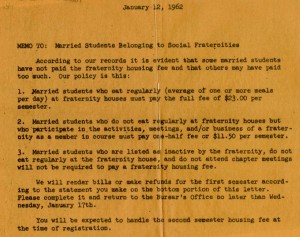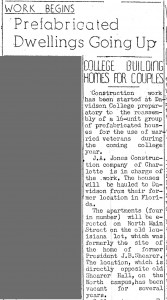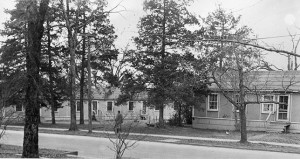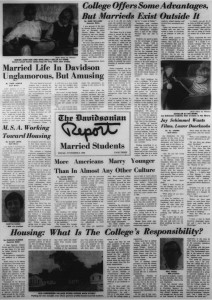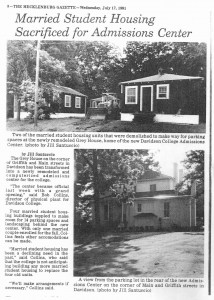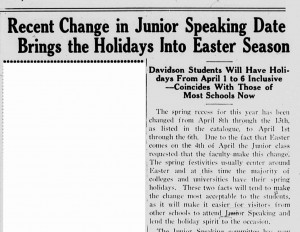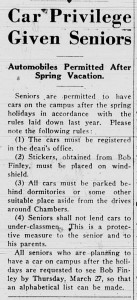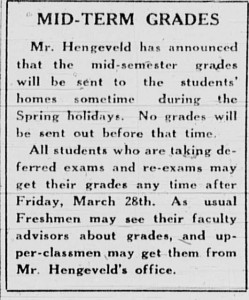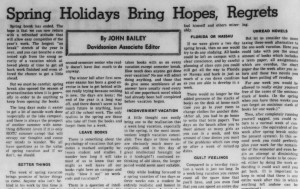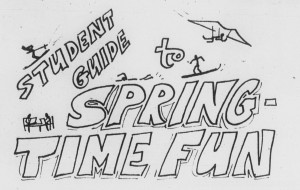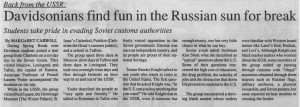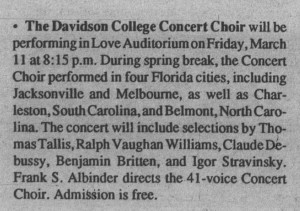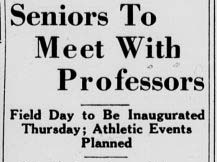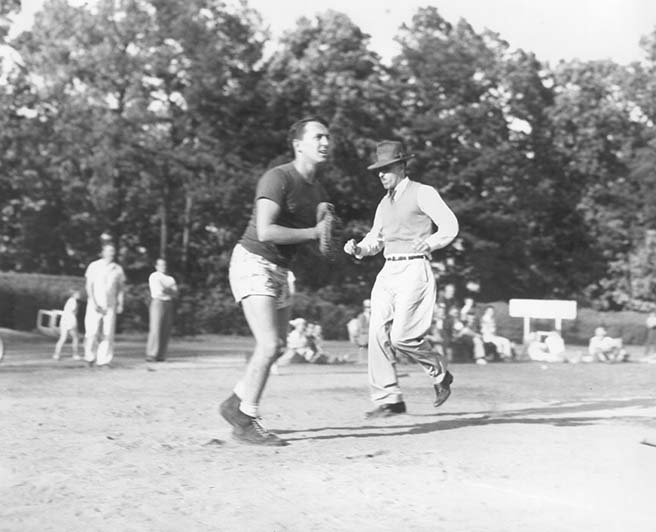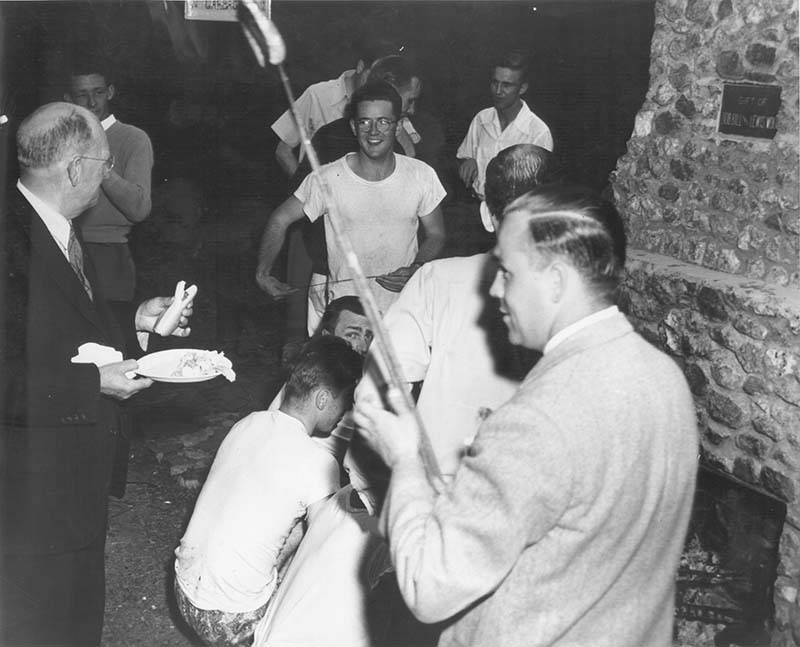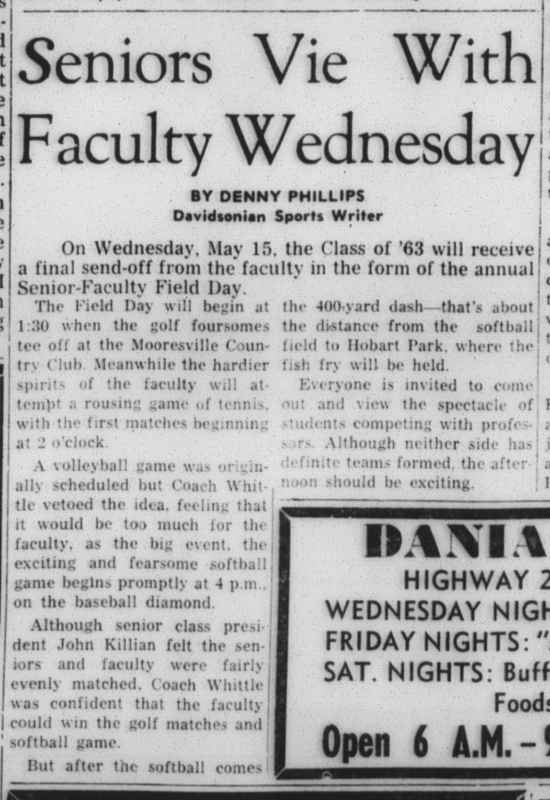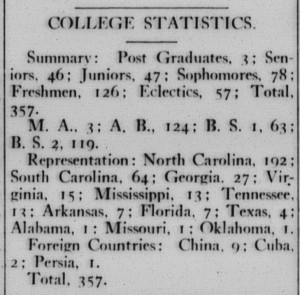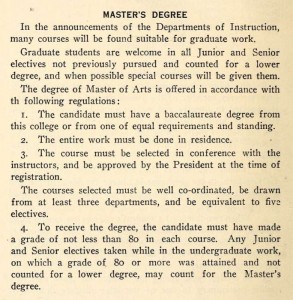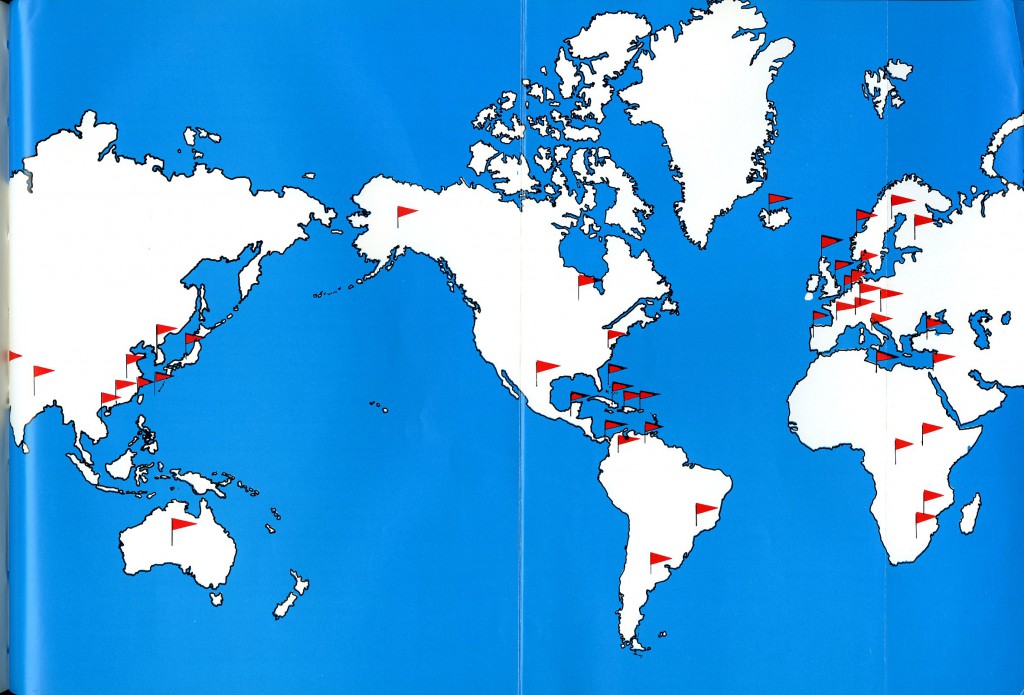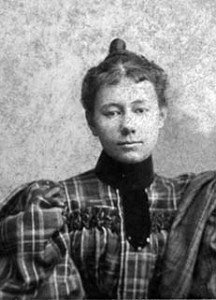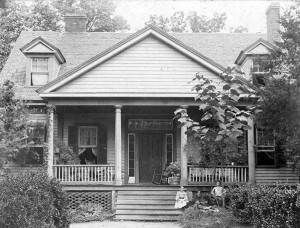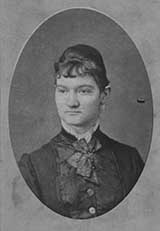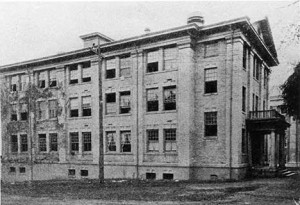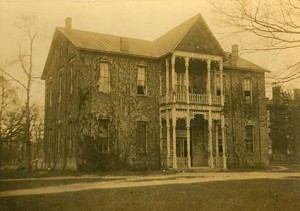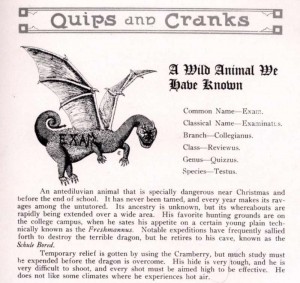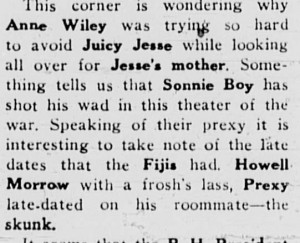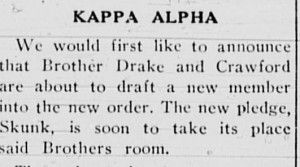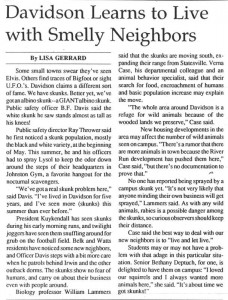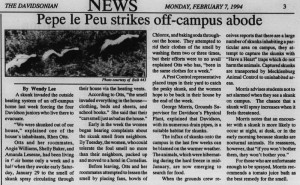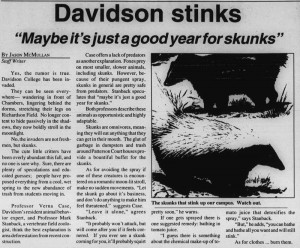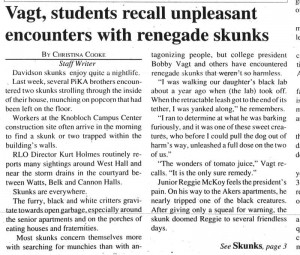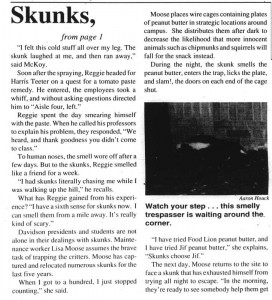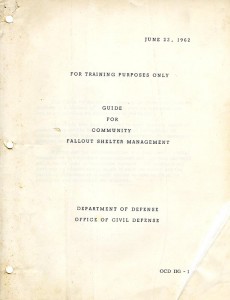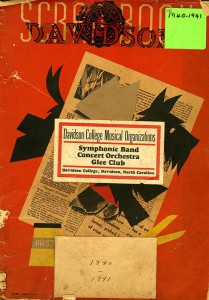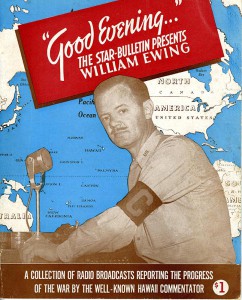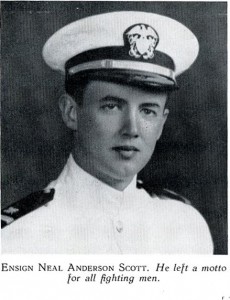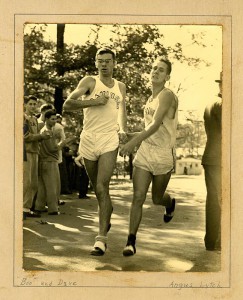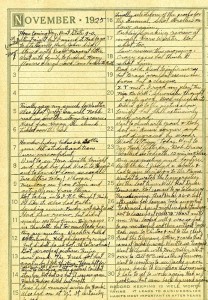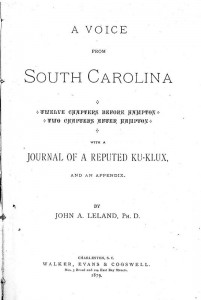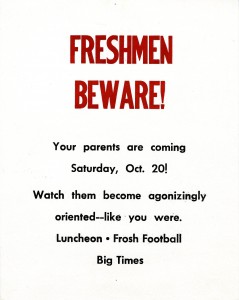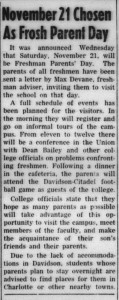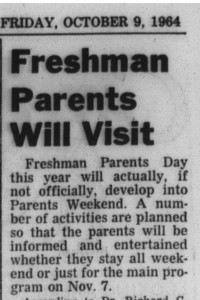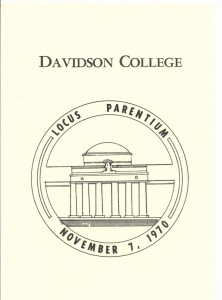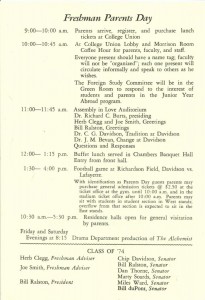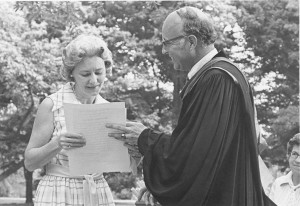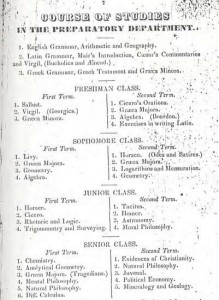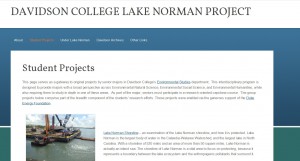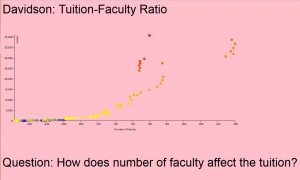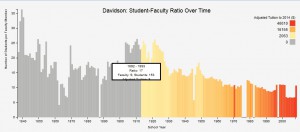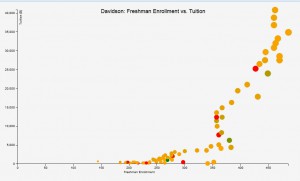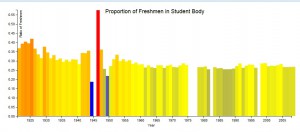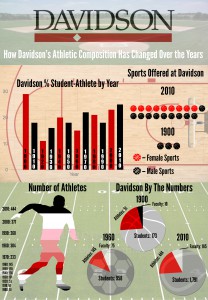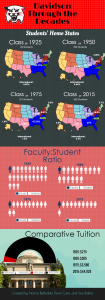An interesting bit of Davidson history tumbled out of an old Wildcat Handbook recently.The handbook was part of a set of duplicate publications being used by a class. The hidden memo dates from January 12 1962 and was directed to: Married Students Belonging to Social Fraternities.
The memo is from the Bursar’s Office. At the time, it was addressing billing issues. Now, as an historical document, it is a reminder of the existence of married students at Davidson. Since Davidson has been traditionally a residential college, the idea of married students may come as a surprise to some.
The first sizable enrollment of married students came via WWII and the postwar G.I. Bill which provided funding for former servicemen and women to attend college. By January 1946, the college had 20 married students among the 145 returned veterans taking classes. In what had to be one of the more unusual gatherings on campus, a reception was held for all the new students that included the wives and babies of the students along with members of the faculty and staff.
The married students did pose a housing challenge for the college and town. The first solution was repurposing old barracks into what became known as the “Cardboard Village.”
The number of married students dropped temporarily, until 1954 when the college has 13 married students, living as reported in the 14 November 1954 Charlotte Observer, “in upstairs apartments, prefabricated houses and trailers throughout the town of Davidson.”
Those prefabricated houses aka cardboard village were still in use in 1968 when the college had 24 married students and a newly formed Married Students Association. The Association members dreamed of a new apartment complex with a minimum of 20 units. The college was sympathetic about housing options but still asking the question of “to what extent the college has responsibility for married students.”
That question was still be asked in 1970 when both the Student Government Association and the faculty Student Life Committee looked at student housing. A report prepared by Tom Robertson, Brent Lane and Pierce Irby noted that by the spring of 1971 the college anticipated as many as 30-40 married couples and that the college currently had housing available for 7 couples. Once again, the idea of an apartment complex was offered alongside suggestions of the college leasing property to a private constructor to build homes or subsidize housing to keep costs within a $75.00 per month range.
Another proposal was to improve the current housing: “With minimum expenditure the college could improve the facilities in the ‘cardboard village.’ If the college were not willing to provide the labor I feel sure that with the proper financial support the students who live there could make substantial improvements themselves. If the college were to relinquish the Carolina Inn and provide perhaps $500 for paint, furniture, etc., I would think that an organized group of married students might respond by providing the labor and the initiative to establish some kind of base around which a social structure for married students might revolve.”
The discussions did not lead to any substantive changes and the predicted number of married students did not materialize. Parts of the “cardboard village” lasted until 1991 – when they were finally demolished for a parking lot for the Admissions Office.
